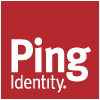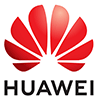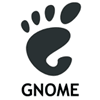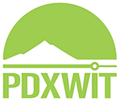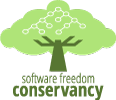Speaker slides & video
Presentation slides will be made available after the session has concluded and the speaker has given us the files. Check back if you don't see the file you're looking for—it might be available later! (However, please note some speakers choose not to share their presentations.)
Bridget Kromhout (Microsoft),
Aaron Wislang (Microsoft)
Going to production with Kubernetes means new considerations that come with many acronyms. Kubernetes is configurable to meet your needs while open source tooling such as Helm, Brigade, and Duffle enable better ongoing operability. Bridget Kromhout and Aaron Wislang walk you through role-based access control, custom resource definitions, and pod disruption budgets.
Josh Clark (Twenty Ideas),
Mike Biglan (Twenty Ideas)
UX happens. From Google to startups, the dominant belief is that the competitive advantage lies in UX. Josh Clark and Mike Biglan explain what it is and why it matters.
Hong Phuc Dang (FOSSASIA )
Sustainability is always a big question for many open source projects. Limited resources, undefined culture, lack of a common goal or vision, lack of maintainers, no backup, poor documentations, and internal conflicts are some of the challenges that prevent open source projects from growing. Hong Phuc Dang tells the story of how FOSSASIA's projects and community are grown and sustained.
Ben Balter (GitHub)
Open source is about publishing code and building communities around shared problems. Ben Balter gets you a sneak peak at GitHub's efforts to empower maintainers to grow safe and welcoming communities around its code and what steps you can take to encourage constructive contributions and good online citizenship within your own community through community management best practices
Asanka Abeysinghe (WSO2)
Asanka Abeysinghe explores cell-based architecture, a self-contained composable unit of architecture. The cell is independently scalable. It’s independently deployable. It’s independently governed. It's part of an ecosystem of cells. A cell-based architecture is a common pattern that any enterprise can connect architecture, implementation, and deployment by making autonomous development teams.
Grishma Jena (IBM)
With the advent of voice-based assistants and chatbots in our homes, our phones, and our computers, businesses, stakeholders, and developers want to learn about language processing. Grishma Jena introduces you to natural language processing (NLP) using Python. You'll start off with textual data and learn how to process it to derive useful insights that can be used in real-world applications.
Brent Laster (SAS)
Join Brent Laster, open-source trainer and author of Professional Git, as he surveys Git beyond the basics. This presentation will be a quick overview of various advanced (and useful) Git commands and features.
LUCIANO RESENDE (IBM)
The Jupyter Notebook has become the de facto platform for data scientists and AI engineers to build interactive applications and develop AI/ML models. Luciano Resende details how to schedule related notebooks that correspond to different phases of the model lifecycle into notebook-based AI pipelines and walks you through scenarios that demonstrate how to reuse notebooks via parameterization.
Russell Rutledge (Nike)
You've got big ideas on how your company should develop an open source culture more fully. Russell Rutledge explains the relationship between open source participation and other collaborative behaviors and how you can apply that to meet your open source goals. The collaboration maturity model gives you guideposts to follow on your organization's journey toward open source.
VM Brasseur (Juniper Networks)
You'll see a lot of companies on the OSCON 2019 keynote stage, each sharing how much they love free and open source software. You may even (sarcastically) think, "Gosh am I ever glad I got to hear from all of these Brands™!" VM Brasseur explains why this perspective isn't very helpful for the companies trying to do open source correctly. They need us—our knowledge, experience, and compassion.
Megan Byrd-Sanicki (Google)
The world has enough rock stars; let’s get some more docs stars. Join Megan Byrd-Sanicki to learn why docs is the superpower your project needs to grow adoption—and how Google supports open source with insights and programs that will help your project.
Tiffani Bell (The Human Utility)
We live in an era where technology impacts more and more of our lives in deeper and deeper ways everyday. But, do we consider who is impacted and how? Are we thinking of how technology can help the less fortunate? This talk covers three lessons learned by a hacker who asked herself these questions and believes in better living through software.
Herman Smith (ixo)
ixo is the blockchain for impact, helping individuals and organizations around the world to achieve the UN Sustainable Development Goals by 2030. Herman Smith dives into how ixo can help you count what matters and value what counts using new Web 3.0 protocols and the ixo blockchain.
Alex Borysov (Netflix),
Mykyta Protsenko (Netflix)
You built your system, you deployed it, you rolled it up in production, but it's just the beginning. The life of your system just started. Alex Borysov and Mykyta Protsenko outline their practical guide to building fault-tolerant systems with code and design patterns from REST and gRPC ecosystems, role of right product decisions, and importance of a proper communication culture.
Brent Laster (SAS)
Brent Laster offers a brief, practical introduction to Jenkins as well as a guide to leveraging its automation and integration with other open source technologies to create a simple, working build and deployment pipeline that implements principles of continuous integration and continuous delivery.
Daniel Izquierdo (Bitergia),
Manrique Lopez (Bitergia)
The InnerSource Commons community has grown organically over the last few years. Daniel Izquierdo explains how he's working to bring all of this expertise and knowledge into the Spanish industry. Join in to hear the first steps and experiences of Spanish InnerSource meetups as well as the difficulties faced and the lessons learned.
Julien Simon (AWS)
Real-life ML workloads require more than training and predicting: data often needs to be preprocessed and postprocessed. Developers and data scientists have to train and deploy a sequence of algorithms that collaborate in delivering predictions from raw data. Julien Simon outlines how to build machine learning inference pipelines using open source libraries and how to scale them on AWS.
Kay Williams (Microsoft)
Open source has become a cornerstone of many tech stacks. A good idea and few lines of code can be the start of the next big project, but many lose steam because they fail to foster a thriving community to shepherd the project in the years to come. Kay Williams explores key learnings for building strong open source communities based on Microsoft’s real-world experience with Kubernetes and VSCode.
Mitchell Kelley (Solo.io),
Scott Cranton (Solo.io)
Mitchell Kelley and Scott Cranton explain how to use open source tooling to inject, debug, and diagnose abnormal conditions in your microservices architecture.
Simon St.Laurent (LinkedIn)
You program in Ruby but long for greater concurrency. You dream of programs that run instantly when called. You wish everything had clearly defined types. Join Simon St.Laurent to learn how Elixir and Crystal refine the diverse approaches built into Ruby, modifying the syntax and structures of this commonly understood language to address their very different priorities.
Christie Wilson (Google)
Systems are going cloud native, but do you know if your CI/CD is keeping up? Moving your systems to more complicated environments impacts your entire software supply toolchain. Christie Wilson walks you through how to use CI/CD to effectively build, test, and deploy cloud native applications.
Luke Sneeringer (Google)
Code generation is a useful approach for building, maintaining, and distributing code based on the specification of an API, reducing error and enabling automatic updates as the API interface changes. It also allows you to expand your reach at a lower cost and get more code into open source for developers. Luke Sneeringer outlines how to create targeted, maintainable code generation for APIs.
Edward Cable (Mifos Initiative)
A convergence of trends and technologies is enabling the democratization of financial services—big data, AI, the cloud, smartphone ubiquity, national IDs, blockchain, and open banking. However, there's one missing factor—open source banking—that will scale the movement and unlock financial services for all, from the unbanked in India to the underbanked in America.
Horea Porutiu (IBM)
If you've ever wanted to get into blockchain development but haven't found a good place to start, you're in the right place. Horea Porutiu walks you through the basics of the Hyperledger Fabric platform by building a simple blockchain application and analyzing the main components required to run a blockchain network.
Thomas Moulard (Amazon)
Robots are becoming prevalent in our lives, helping us carry out tedious housework, distribute warehouse inventory, automate manufacturing, and research lunar landscapes. Thomas Moulard discusses AWS RoboMaker, a new cloud robotics service that makes it easy for developers to develop, test, and deploy robotics applications and build intelligent robotics functions using cloud services.
Bryan Friedman (Pivotal),
Brian McClain (Pivotal)
There's too much fragmentation for developers when it comes to deciding the right open source FaaS solution. Bryan Friedman and Brian McClain detail Knative, an open source project from Google, Pivotal, and other industry leaders that provides a set of common tooling on top of Kubernetes to help developers build functions.
Maureen McElaney (IBM)
With increasing regularity we see stories in the news about machine learning algorithms causing real-world harm to people's lives and livelihoods. Maureen McElaney examines how bias can take root in machine learning algorithms and ways to overcome it.
Nick Pinckernell (Comcast)
With ubiquitous ML models, model serving and pipelining is more important now. Comcast runs hundreds of models at scale with Kubernetes and Kubeflow. Together with other popular open source streaming platforms such as Apache Kafka and Redis, Comcast invokes models billions of times per day while maintaining high availability guarantees and quick deployments. Join Nick Pinckernell to learn how.
Aaron Longwell (US State Dept, Afghanistan)
Modern software systems and companies are starting to resemble ecosystems more than engines, and yet we keep trying to design and manage our work like engineers. Aaron Longwell looks to nature for inspiration instead.
Elmer Thomas (Twilio SendGrid),
Craig Dennis (Twilio)
Elmer Thomas and Craig Dennis take you through designing, building, and deploying a Python-powered application within a microservices architecture deployed to AWS.
Laura Janusek (Modern Teacher)
You no longer have to worry about anyone asking, "How long will that take?" Laura Bernardin Janusek explores how to use Agile, consensus-based estimation technique Planning Poker to generate thoughtful and data-backed estimations for any product build.
Anubhav Mishra (HashiCorp)
In 2018, HashiCorp Configuration Language (HCL) was second on GitHub's list of fastest-growing languages. Anubhav Mishra explains why HCL is popular among the operators and developers who prefer to use it to express infrastructure as code and discusses the reasons behind the creation of the language in the first place.
Bridget Kromhout (Microsoft),
Jessica Deen (Microsoft)
Bridget Kromhout and Jessica Deen lead a demo-fueled exploration of the differences between Helm 3 and the Helm of yore, tips for a successful rollout or upgrade, and opportunities to shape the project’s future.
Tan Zhongyi (Baidu)
Open source has been very popular in China in recent years, but InnerSource is still new. Baidu, the Chinese search engine company, began to adopt InnerSource two years ago. Tan Zhongyi leads this project, and he details how this happened and the challenges the company faced and overcame.
Sam Lanning (Semmle Inc)
TypeScript is revolutionizing the JavaScript ecosystem by introducing static typing, allowing JS projects to truly scale. Sam Lanning explores the transformations taking place, focusing on the benefits across project boundaries, offers an overview of DefinitelyTyped, and shows how type definitions are now starting to be distributed as part of npm packages.
Neeraj Poddar (Aspen Mesh)
Understanding what problems a service mesh is designed to solve and leveraging its capabilities is key for application developers. This allows you to focus on the pieces you need to build your application and deliver business value. Neeraj Poddar dissects which service mesh capabilities you should care about and explores common questions from platform teams.
Lucas Charles (GitLab)
Application security testing has been around for a long time, yet successful attacks continue despite significant investments in application security. Shift left isn’t enough for modern software development that needs integrated and automated continuous security testing. Lucas Charles looks at three key considerations to get you there.
Ellen Korbes (Garden)
Developers working with Kubernetes still wonder what the optimal development workflow looks like. Ellen Korbes explores the capabilities of the tooling available in the current landscape and sees if it can offer end-to-end workflows that perform effectively in the real world.
Sophie Watson (Red Hat),
William Benton (Red Hat)
Sophie Watson and William Benton demonstrate high-level open source tools that build on Kubernetes to solve machine learning workflow pain points. They explain why Kubernetes is great for ML and present tools that effortlessly provision custom research environments, publish reproducible notebooks, operationalize models and pipelines as services, and detect data drift automatically.
Matt Schallert (Chronosphere)
Managing large stateful applications is tough. Matt Schallert outlines the challenges of automating stateful systems at scale and details how embracing a declarative approach can ease operation and automation of these systems on orchestrators such as Kubernetes. He then demonstrates how to apply this methodology to different types of stateful workloads.
Ellen Korbes (Garden)
Studying neural networks is a surefire way to end up fighting more math than you can shake a stick at. Wish you could learn about the likes of gradient descent and backpropagation in a language you actually understand—like Go? Then this one is for you. Join Ellen Korbes to learn neural networks with code, not math, and algorithms, not logarithms.
Timirah James (TechniGal LA)
Although Swift is steadily gaining traction and credibility among developers, some still have trouble believing in Swift’s ability when it comes to serverless. But you don't have to be afraid. Timirah James explores the basics of the popular server-side Swift web framework Vapor and uses it to build a fun and simple serverless application.
Robert Aboukhalil (Invitae)
Join Robert Aboukhalil for an introduction to WebAssembly—a powerful tool for porting applications to the web and speeding up data-intensive web apps. If you don’t know what WebAssembly is, how it works, or how to practically get started using it, now’s your chance.
Benjamin Picolo (Squarespace)
Benjamin Picolo walks you through bootstrapping and using gRPC streams to build real-time APIs usable across services, the browser, and mobile applications all at once.
Torin Sandall (Open Policy Agent Project)
Organizations have relied on wikis and institutional knowledge to document and enforce important rules that govern how the systems behave, but today many organizations pursue policy as code for greater control and visibility over the systems. Torin Sandall shows you how to implement policy as code for microservices and Kubernetes using declarative languages.
Marco Emrich (codecentric)
A good developer will always try to enlarge their toolbox and get to know new or better tools for specific situations, but it's also helpful to free yourself from mental ballast now and then to get rid of one or another stone wedge. For most developers, a classic loop is such a stone wedge. Marco Emrich dives into why you shouldn't program loops anymore.
Donald Miner (Miner & Kasch)
Production artificial intelligence systems are interacting with the real world, and it's terrifying that oftentimes nobody has any idea how they're performing on live data. Donald Miner details why you should track your models in production over time, explains how you can implement proper logging and metrics for models, and details metrics you should probably be capturing.
Pete Skomoroch (Workday)
Machine learning (ML) drove massive growth at consumer internet companies over the last decade, enabled by open software, datasets, and AI research. For many problems, ML will produce better, faster, and more repeatable decisions at scale. Unfortunately, building and maintaining these systems is difficult and expensive. Pete Skomoroch explores what you need to produce better ML results.
Niraj Tank (Capital One),
Sumit Daryani (Capital One)
Hosting models and productionizing them is a pain point. ML models used for real-time processing require data scientists to have a defined workflow giving them the agility to do self-service seamless deployments to production. Niraj Tank and Sumit Daryani detail open source technologies for building a generic service-based approach for servicing ML decisioning and achieving operational excellence.
The 15th Annual O’Reilly Open Source Award winners will be announced, along with the 17th Annual Frank Willison Award winner.
Jiaqi Liu (University of Chicago, CTDS)
Data-intensive applications, with many layers of transformations and movement from different data sources, can often be challenging to maintain and iterate even after they are initially built and validated. Jiaqi Liu explores how to factor in monitoring, alerting, and tracing data lineage when building data applications that move and transform data across multiple dependencies.
Josh Simmons (Salesforce | Open Source Initiative),
Cat Allman (Google)
Drawing on recent discussions with dozens of leaders from corporate OSPOs, nonprofit foundations, and open source communities, Josh Simmons and Cat Allman share what companies are doing to support open source communities, what kind of support open source communities are actually asking for, and the gaps that remain.
Adrian Cockcroft (Amazon Web Services)
Businesses that are based on open source technology are leveraging communities to get ahead of their competition. Adrian Cockcroft explores how the most successful open source-based businesses have turned the end user developer community and their partner ecosystem into a force multiplier for their own marketing and engineering teams.
Bas Geerdink (Aizonic)
Streaming analytics is a popular subject in enterprise organizations because customers want real-time experiences, such as notifications and advice based on online behavior and other users’ actions. Bas Geerdink details an open source reference solution for streaming analytics that covers many use cases that follow a "pipes and filters" pattern, built with Scala, Flink, Kafka, and Cassandra.
Shradha Ambekar (Intuit)
Cassandra is one of the most popular datastores in big data and ML applications. Data analysis at scale with fast query response is critical for business needs, and while Cassandra with Spark integration allows running an analytical workload, it can be slow. Shradha Ambekar dives into the challenges faced at Intuit and the solutions her team implemented to improve performance by 100x.
Paco Nathan (derwen.ai)
Paco Nathan offers an overview of its history, themes, tools, process, standards, and more—partly based on interviewing experts in this field about issues and best practices. Join in to learn what impact machine learning has on data governance and vice versa, along with an overview of open source projects and open standards in this space.
Roger Magoulas (O'Reilly Media)
Using aggregate analysis of O’Reilly online learning content usage and search data, Roger Magoulas shares key insights and trends that impact the technology tools ecosystem—trends you can use to help make decisions affecting your next project, your organization’s strategic direction, and your own career.
Michael Enescu (Project EAN),
Peter Enescu (University of California San Diego)
Fires caused by electric grid failures are increasing at an alarming rate. Michael Enescu and Peter Enescu examine how the energy adaptive networks technology built on open source and used to monitor and control power grids forms a planetary skin that can be used to predict and avoid such disasters as the Napa and Paradise Fires.
Michael Hunger (Neo4j)
With the optimizing Graal Compiler added to Java 11 and the language implementations in Truffle for Ruby, Python, JavaScript, and R, it becomes possible to run them natively on the Java virtual machine (JVM), even exchanging data between them. Michael Hunger explains how you can make use of that impressive capability.
Kristen Gallagher (Edify)
It’s typical for company onboarding to gloss over the team-specific and technical information you need to truly get started in a new role. Kristen Gallagher explains how to apply the concept of test-driven development to onboarding—in other words, retention-driven development, a new, durable way to build and maintain technical employee onboarding programs.
Wenbo Zhu (Google)
When designing APIs such as the new GCP Firestore real-time database and Google Assistant, how did Google decide which trade-offs to make? Wenbo Zhu dives deep into the challenges faced while deploying a real-time streaming API designed for clients from data centers to the internet and details the trade-offs API developers need be aware of when designing such an API.
Bruce Gray (Gray & Associates)
Quality literature isn't produced by just writing; it's in the rewriting that excellence is achieved. This is also true with code. Robert Gray shines a spotlight on the mind-set and mechanics of refactoring and explains why it's key to improving readability and code quality.
ANA ECHEVERRI (IBM),
Trisha Mahoney (IBM)
ML models are increasingly used to make decisions that impact lives. Ana Echeverri and Trisha Mahoney walk you through how to use the open source Python package AI Fairness 360, developed by IBM researchers, a comprehensive open source toolkit empowering users with metrics to check for unwanted bias in datasets and machine learning models and state-of-the-art algorithms to mitigate such bias.
Mark Chmarny (Google Cloud)
Knative is an open source serverless platform extending Kubernetes to help developers build, deploy, and manage modern serverless workloads. Mark Chmarny walks you through Knative and shares demos illustrating how to use it to build modern event-based solutions without worrying about the underlying infrastructure.
Wally Quevedo (Synadia Communications, Inc)
NATS is a mature, high-performance publish/subscribe messaging system that's part of the Cloud Native Computing Foundation (CNCF). Waldemar Quevedo explores how to build production-ready applications using NATS to address common issues that arise in cloud native environments, such as service discovery, scalability, self-healing, authentication/authorization, and low-latency RPC.
Ron Evans (The Hybrid Group)
TinyGo takes the Go programming language to the "final frontier" where it could not go before...running directly on microcontrollers like Arduino, the BBC's micro:bit, and more. Ron Evans introduces you to TinyGo and demonstrates some live coding.
Neal Ford (ThoughtWorks)
Unsure about the basics of software architecture? Neal Ford walks you through the foundational topics of software architecture, illustrating his points with examples. You'll learn architecture characteristics, how to derive components, architecture patterns and selection, and documentation.
REMOVED REMOVED (HPE)
Almost everyone's looking to streamline the way they develop apps and deploy them. Taking advantage of an easy-to-use open source UI component library (such as grommet.io) to create responsive, mobile-first projects is the way to go. Join Pramod Sareddy to learn how Open Service Broker saves you time.
Cyrene Domogalla (ELUCYAN LLC)
Verbal interactions, chats, email, and social media—most of us work to communicate thoughts and ideas constantly. Cyrene Domogalla explains how to be a more effective visual storyteller. Getting people to listen—and being heard—are critical factors in effective communication. Join in to learn how to explain better to achieve your goal and maximize impact with engaging visuals.
Paris Pittman (Google)
Your open source project is up and running - now what? Paris Pittman will walk through some of the practical, tactical work you can do to ensure your community doesn't just grow, but thrive. Through examples from multiple Google-supported open source communities, you'll learn how to create "gardeners" that do the hard but essential work that builds and sustains healthy communities.
Diane Mueller (Red Hat OpenShift),
Daniel Izquierdo (Bitergia)
Diane Mueller and Daniel Izquierdo examine joint research findings from Bitergia and share lessons learned at Red Hat on the interrelatedness of Kubernetes, OpenShift (OKD), OpenStack, and Cloud Native Computing Foundation (CNCF) communities developing around distributions. They also detail new approaches to open source community development.
Alison McCauley (Unblocked Future)
In a world of increasingly complex challenges, the accelerated innovation of open source development is more urgent than ever. But nobody knows if it's enough. Join Alison McCauley to learn how blockchain technology offers new tools that could help extend the ethos of open innovation into new areas.
Jonathan Peck (GitHub)
ML has been advancing rapidly, but only a few contributors focus on the infrastructure and scaling challenges that come with it. Jonathan Peck explores why ML is a natural fit for serverless computing, a general architecture for scalable ML, and common issues when implementing on-demand scaling over GPU clusters, providing general solutions and a vision for the future of cloud-based ML.
Pedro Cruz (IBM ),
Brad Topol (IBM)
Many IBM products and offerings have a solid foundation of open source—take a peek under the hood of IBM’s cloud platform and services and see for yourself. Pedro Cruz and Brad Topol outline the intersection between open source and natural disasters by sharing one of IBM's 2018 solutions. Learn how to get involved at Developer.ibm.com/callforcode.
Tony Wasserman (Carnegie Mellon University in Silicon Valley)
In 2016, the mayor and board of supervisors of the city and county of San Francisco approved a plan that would lead to the development of open source voting technology for San Francisco’s elections. Tony Wasserman provides a progress report on the development of an open source voting system to replace San Francisco's existing proprietary paper ballot voting system.
Adam Jacob (Chef)
What is the emotional, intellectual, artistic heart of the free and open source software movement? As open source reigns ascendent as the dominant development paradigm in the world, we've lost touch with what makes it great. Adam Jacob draws on 13 years spent building the Chef community to explore what makes open source special.
Sergio Méndez (Universidad San Carlos de Guatemala)
Sergio Mendez examines critical challenges when implementing AI chatbots and explains how Movistar designed an open source serverless architecture using OpenFaaS on top of Kubernetes and other complementary technologies like NoSQL, brokers to deploy Telegram AI chatbots. Sergio then compares these technologies to "vendor lock-in" services offered by major cloud providers.
Isobel Redelmeier (LightStep)
You're sick of grepping through logs, hunting down the cause of last night's outage. Your team dreams of refactoring to better architecture but struggles to get started amid the spaghetti code. Production meets all performance objectives only because you can't measure it. Join Isobel Redelmeier to learn how to apply distributed tracing for better debugging, performance analysis, and refactoring.
Tania Allard (Microsoft)
ML in production is different than ML in an R&D environment. Tania Allard dives deep into a number of techniques to test your ML quality and decay in your R&D and production environments appropriately. You'll see examples of issues commonly encountered in the ML area and how to test and monitor your data, model development, and infrastructure.
Arun Gupta (Amazon Web Services)
Arun Gupta walks you through how AWS starts with customers and works backwards to solve their problems. Customer use of and dependencies on open source technologies have been steadily increasing over the years; this is why AWS has long been committed to open source, and its commitment to open source projects and communities continues to accelerate.
Jon Galloway (.NET Foundation)
As more and more businesses and people depend on open source software, critical technologies you rely on need to be sustained. Jon Galloway outlines what open source software foundations do for projects, the community, and the open source ecosystem as well as the importance of corporations and individuals getting involved.
Sam Lanning (Semmle Inc)
TypeScript is revolutionizing the JavaScript ecosystem. And with more developers writing Node.js projects using TypeScript instead of JavaScript, it’s important that type definitions for packages are easily available. Sam Lanning dives into Node.js and npm, demonstrating how to create npm packages allowing other developers to easily use the type definitions of your library.
Premier Diamond Sponsor
Diamond Sponsors
Platinum Sponsor
Gold Sponsors
Silver Sponsors
Supporting Sponsors
Premier Exhibitors
Exhibitors
Innovators
Non-Profit Exhibitors
Diversity and Inclusion Sponsors
Sponsorship Opportunities
For exhibition and sponsorship opportunities, email oscon@oreilly.com
Partner Opportunities
For information on trade opportunities with O'Reilly conferences, email partners@oreilly.com
Contact Us
View a complete list of OSCON contacts
©2019, O'Reilly Media, Inc. • (800) 889-8969 or (707) 827-7019 • Monday-Friday 7:30am-5pm PT • All trademarks and registered trademarks appearing on oreilly.com are the property of their respective owners. • confreg@oreilly.com





